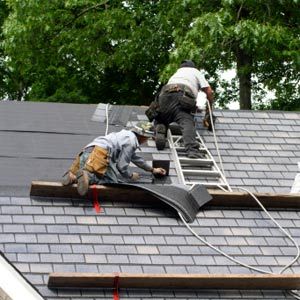With the exception of those rare home repair enthusiasts, one of the most dreaded projects for homeowners is roof repair. A leaky roof can cause major damage to the structure of your home and, if left unchecked, could eventually lead to the damage of many possessions inside your home. Asphalt shingles, which are what you'll find on most roofs, generally only last 15 to 20 years and can require a lot of maintenance and upkeep.
If you're looking for an alternative to the exhausting process of roof repair and maintenance with asphalt shingles, you may want to consider rubber roofing. Worried that rubber roofing sounds like stretching out a dozen Goodyear treads over your home? Don't worry--although rubber roofing materials can come in a roll for buildings with flat roofs, you can also buy rubber shingles, which look much like slate shingles and come in a variety of colors and designs [source: The Roofery].
Advertisement
Another advantage to using rubber roofing materials is that most rolls and shingles are composed of recycled tires, saw dust and slate dust, which are much more eco-friendly than other roofing materials. Although rubber-roofing shingles can be more expensive than asphalt shingles, rubber roofs are much more durable and less likely to crack and crumble through tumultuous weather and drastic changes in temperature. Rubber shingles are also much cheaper and lighter than slate shingles--if that's the style you're looking for--and are similarly fire resistant. Rubber roofing materials also last much longer and require less maintenance--most manufacturers warranty their roofs for thirty to fifty years, and some even carry a lifetime warranty. The first rubber roof, installed on a home in Wisconsin in 1980, is still holding strong today [source: Keon]
Read on to learn about rubber-roof installation.
Advertisement


